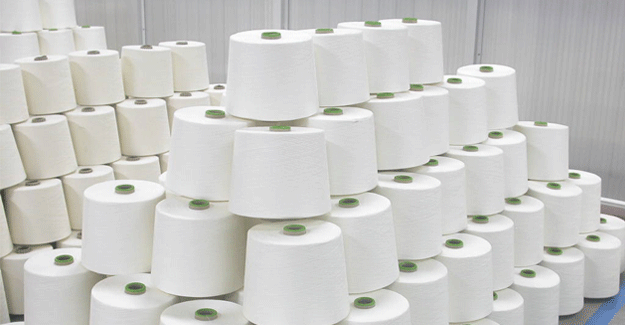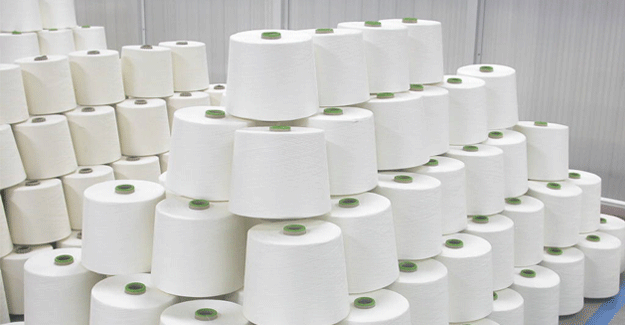
Excessive Incentives Have Proved Bane For The Domestic Cotton Spinning Sector
The domestic cotton yarn sector, the strongest link of the Indian textile value chain, is under tremendous pressure. And the biggest irony is the fact that the same incentives that have been offered to this sector to maintain its pace and momentum in the last few years, has worked against it. Backed by the Centre-sponsored Technology Upgradation Fund (TUF) and in the recent few years incentives given by various state governments like Maharashtra, Gujarat, Rajasthan, Andhra Pradesh and Madhya Pradesh, has created huge spinning capacity in the sector, even as the commensurate demand has not been generated in the downstream segments such as weaving and garmenting.
Currently, there are around 52 million spindles in the country of which a big chunk was added (through replacement and new) during the initial years of TUF scheme that started in 1999 in order to upgrade and modernise the domestic textile industry. Later as the government realized that majority of the fund was getting consumed primarily in spinning, it tweaked the scheme in favour of other segments of the industry. In the last six months, most of the incentives under the scheme to the spinning sectors have been discontinued. However, that has more than compensated by the state government’s textile policies in the last four-five years. In fact, the last four years have seen addition of around 2 million spindles every year due to incentives provided by these states under their textile policy.
This has led to a massive demand-supply imbalance (an overcapacity situation) in the cotton yarn sector. The recent Chinese cotton policy which has discouraged piling up of huge raw cotton bank in that country, has added to the India’s woes in a big way. China which would imports almost 45 per cent of India’s cotton yarn exports till three years ago, has reduced its imports considerably (as low as 15 per cent). This has created a big flutter in the Indian spinning industry which produces export surplus of as high as 30 per cent. Lack of diversification into other markets in the wake of emergence of regional blocs, has failed to offset the loss suffered in China.
As if that was not enough, the whole equation of yarn business has gone awry for spinning units since the raw cotton prices in the last couple months have almost doubled (from around Rs 32,000 per candy in June to Rs 50,000 in August), even as the yarn prices continued to be muted in the last three years on the domestic market. This has not only squeezed the margins for the spinners but also most of the industry players are bleeding profusely. Many mills are partially or fully closing down. The recent RBI Financial Stability report has stated that textiles has the highest slippages from Standard Account to NPAs i.e. 8.8 per cent in 2015 and the way the industry is going, 2016 is going to be worse.
As a result NPAs are increasing, mills are partially or fully closing down on one hand while new investments are coming on the other hand. Old and new mills have a cost differential of 10% in an industry, which doesn’t even have a consistent Net Profit margin of 5%.
Cotton to yarn had a value addition of Rs 125 per kg in March 2013 and went up to Rs 144 per cent kg in September 2014. Since last one year, it been down to Rs 115 per kg and now it has come down to Rs 100. Hence in last three years, contribution from yarn manufacturing has reduced by 25 per cent, while manufacturing costs have gone up by about 10 per cent.
Experts have attributed this plight of the cotton yarn sector to the government’s lopsided policy that only helped in abnormal addition (mushrooming) of spinning capacities at the cost of other downstream links of the textiles and clothing industry. It is to be noted that over 70 per cent of investments made under the ongoing TUF has gone into the spinning sector, while the weakest links like weaving, processing and garmenting together have received the rest.
“On the micro level, TUF has failed to deliver its main objectives. Instead of strengthening the weaker segments of the industry, incentives have gone into upgrading the already-strong segment (i.e. spinning) of the industry. This has created a massive imbalance and distortion across the textile vales chain. While other weaker segments have continued to suffer, spinning is currently under huge stress as there is not enough demand to consume the production,” says Sanjay Jain, president, NITMA.
“Our policy initiatives and their implementation have gone haywire. There is a lack of holistic approach and instead of putting in place an organized supply chain, we have end up infusing anomalies and thus distorting the production base. You will be surprised to know that these incentives have also created an unhealthy competition within the spinning sector. In other words, newly-built spinning units are not only enjoying incentives on their investments but also on their operational and thus rendering several of existing units unviable. Old and new mills have a cost differential of 10% in an industry, which doesn’t even have a consistent net profit margin of even 5 per cent. It is a kind of canabalisation that will have a severe ramification on the overall sector,” warns another expert.
The Union government which is in the process of coming up with a new Textile policy, must put due diligence while framing various details of the policy. Just having a new textile policy and provide incentives will not serve any purpose. This is something we must learn from our recent experience and try to put a more meaningful framework. States should also be made party to the think tank so that the resources can be used judiciously and as a consequence we can prepare our textile industry to take on the challenged effectively.

Textile Excellence
If you wish to Subscribe to Textile Excellence Print Edition, kindly fill in the below form and we shall get back to you with details.








